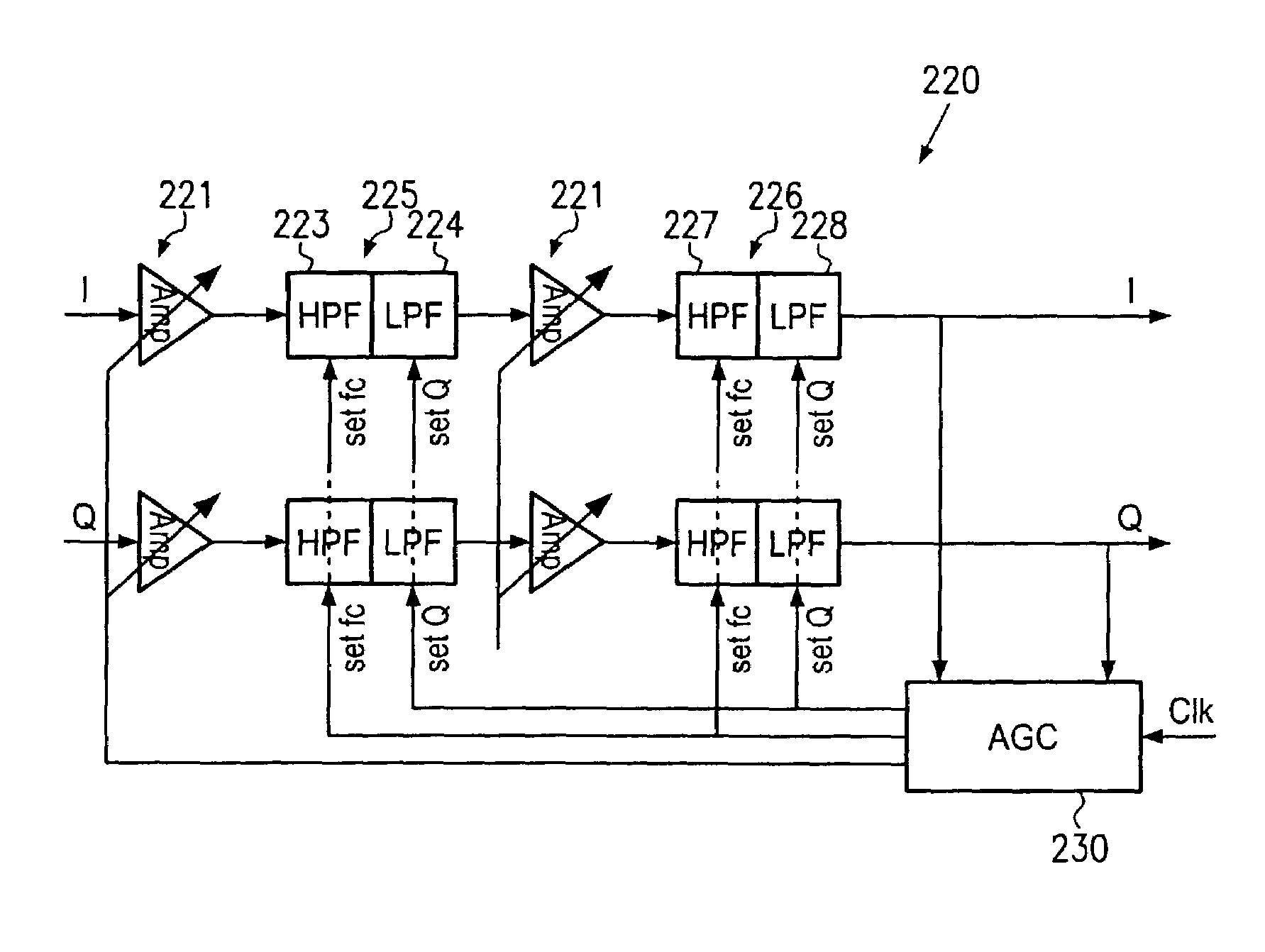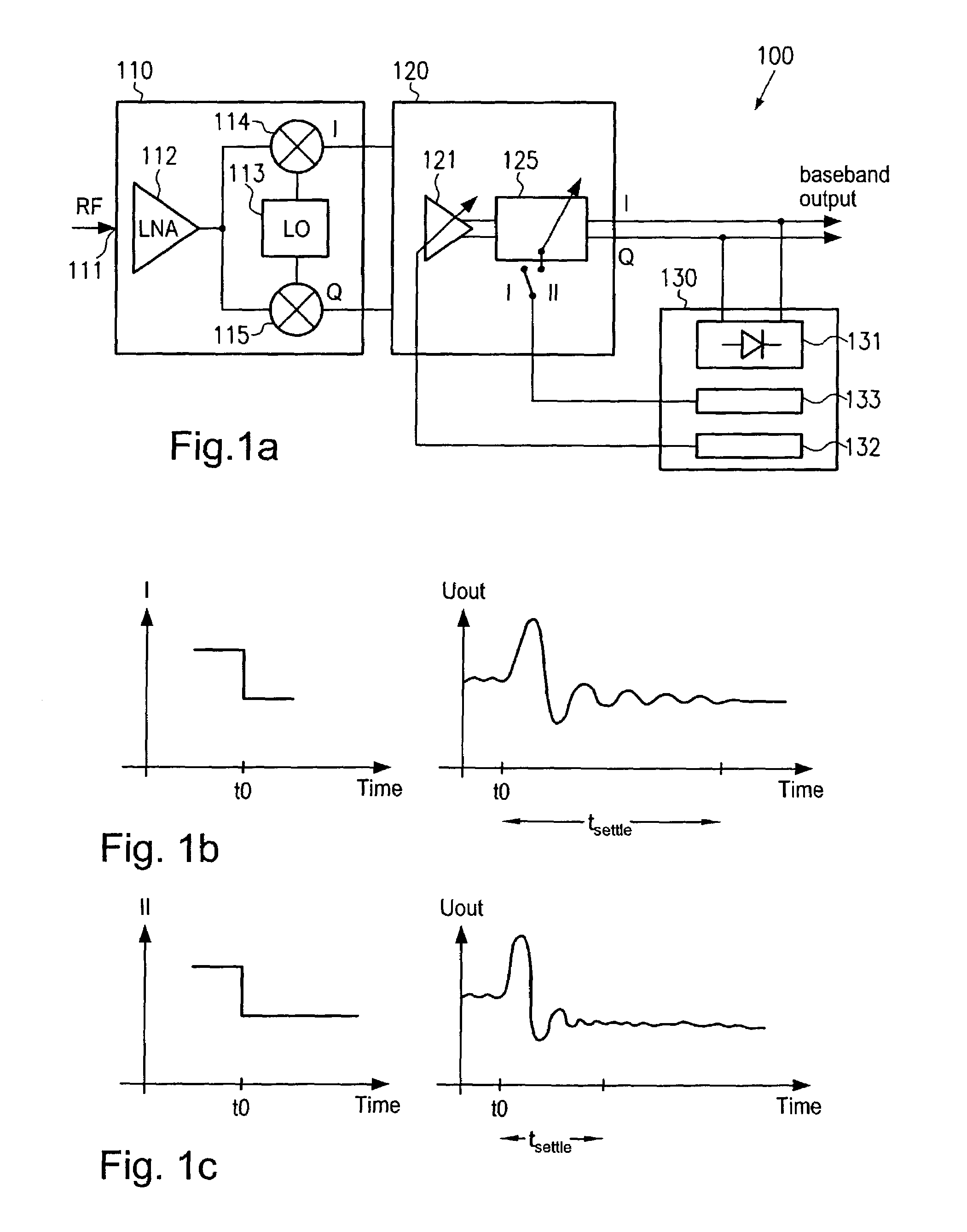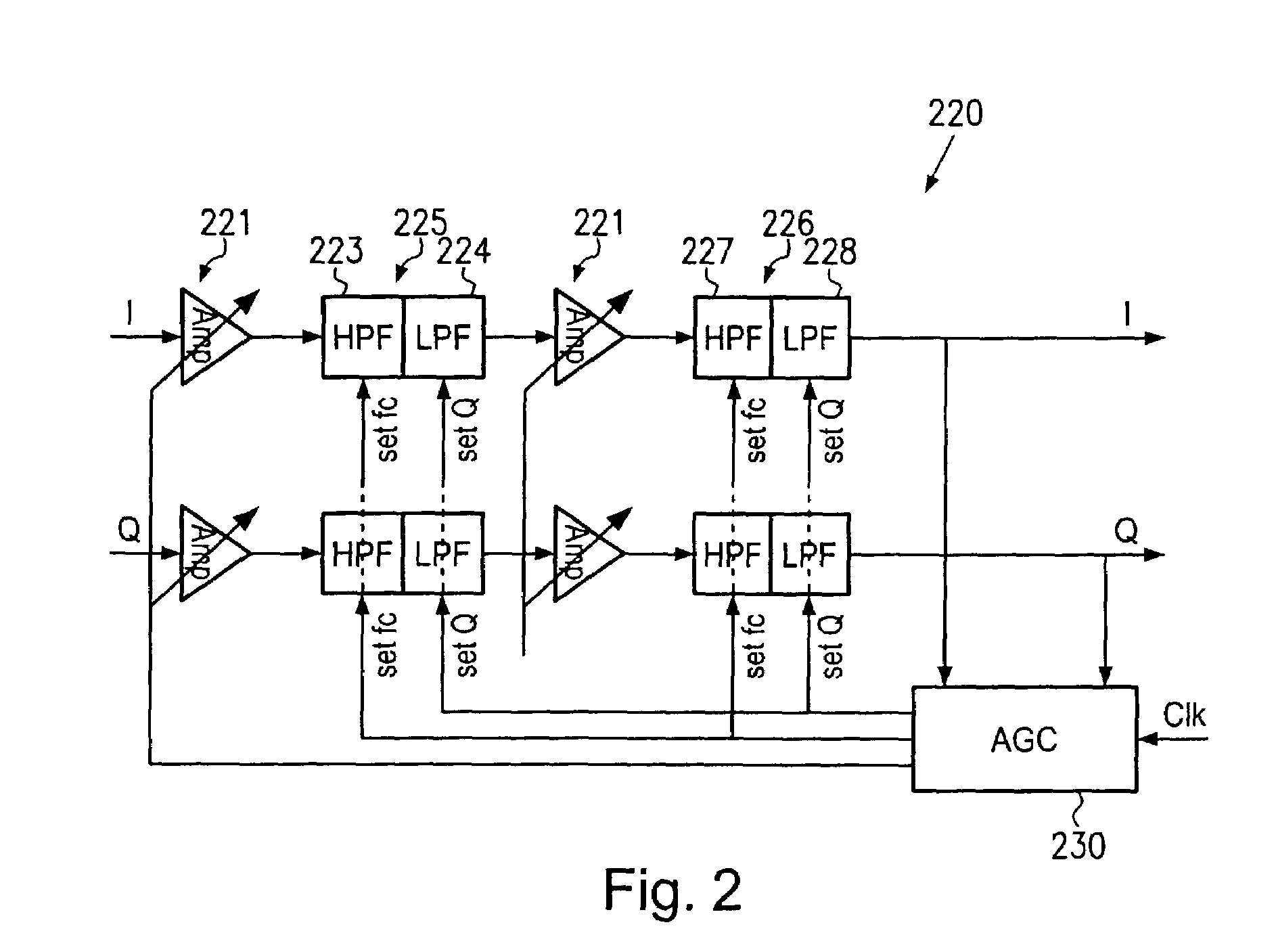Direct conversion receiver having a gain-setting dependent filter parameter
a direct conversion and filter parameter technology, applied in the direction of gain control, amplitude demodulation, digital transmission, etc., can solve the problems of reducing device volume, direct conversion architecture also involves serious drawbacks, and removal from the signal spectrum, so as to achieve rapid adaptation to any dc step
- Summary
- Abstract
- Description
- Claims
- Application Information
AI Technical Summary
Benefits of technology
Problems solved by technology
Method used
Image
Examples
Embodiment Construction
[0020]It is to be noted that although the present invention is described with reference to the embodiments as illustrated in the following detailed description and in the accompanying drawings, the detailed description as well as the drawings are not intended to limit the present invention to the particular embodiments disclosed therein, but rather the described embodiments merely exemplify the various aspects of the present invention, the scope of which is defined by the appended claims.
[0021]With reference to FIGS. 1a–1c, one illustrative embodiment will now be described that is directed to a baseband signal path usable in a direct conversion receiver, wherein digital automatic gain controlling is performed such that upon changing the discrete gain setting of a variable gain amplifier at least one parameter of a filter unit is changed to switch the filter unit from a first operation mode into a second operation mode that allows the filter unit to rapidly settle in response to a DC...
PUM
 Login to View More
Login to View More Abstract
Description
Claims
Application Information
 Login to View More
Login to View More - R&D
- Intellectual Property
- Life Sciences
- Materials
- Tech Scout
- Unparalleled Data Quality
- Higher Quality Content
- 60% Fewer Hallucinations
Browse by: Latest US Patents, China's latest patents, Technical Efficacy Thesaurus, Application Domain, Technology Topic, Popular Technical Reports.
© 2025 PatSnap. All rights reserved.Legal|Privacy policy|Modern Slavery Act Transparency Statement|Sitemap|About US| Contact US: help@patsnap.com



